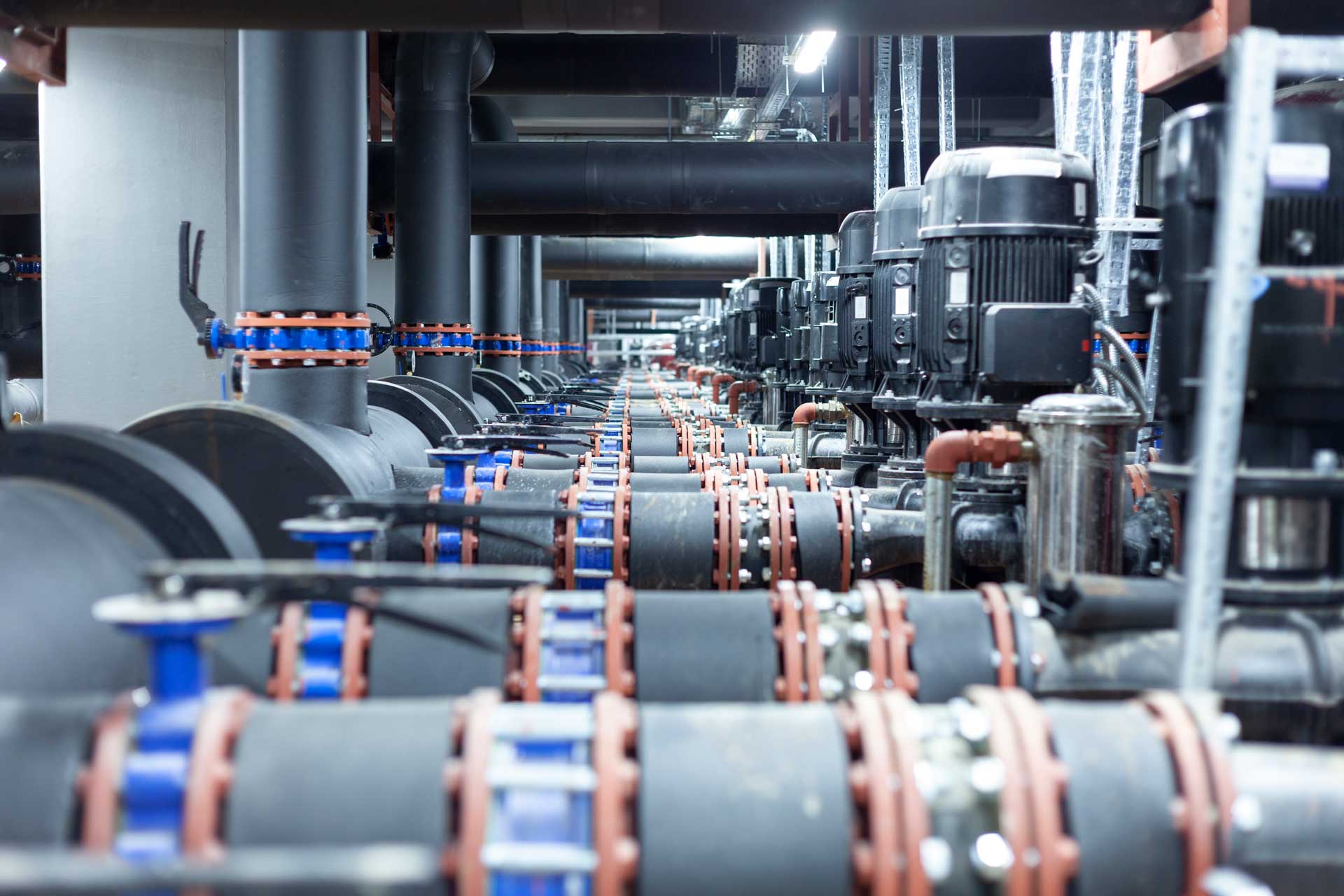

Installing a new centrifugal pump? Ensure a successful centrifugal pump installation with expert guidance from Crane Engineering. Our team offers comprehensive services, including pump selection, installation, repair, and customized skid systems in Wisconsin, Minnesota, and Michigan.
Pump piping design is sometimes overlooked when setting up new installations of centrifugal pumps. Typically, the focus during installation is often focused on the equipment than the pipes that supply it. However, when a centrifugal pump is installed with inappropriate piping arrangements, pumps can experience premature and repeated failures during the life of the pump. Maintenance teams will regularly repair the pump, effectively treating the symptom instead of the true problem.
Knowledge and resources are extremely limited on this topic, except what you may find in the Installation, Operation, and Maintenance (IOM) manual (which is minimal). This is why engineers and experts rely on Crane Engineering for insight and help with centrifugal pumps and positive displacement pumps. Our in-house team of engineers can answer questions related to not only pumps but valves and skid systems. We house a complete service and repair team that is equipped to install, repair, or replace umps to achieve optimum performance.
Contact Crane Engineering today for assistance with your centrifugal pump installation. We provide expert guidance and support including pump selection, installation, repair, and customized skid systems.
We serve Wisconsin, Minnesota, Iowa, North Dakota, South Dakota, and the Upper Peninsula of Michigan.
Include a straight run pipe length equal to 5 to 10 times the pipe diameter between the pump inlet and any obstruction in the suction line. Note: Obstructions include valves, elbows, "tees", etc.
Keeping the pump suction piping short ensures that the inlet pressure drop is as low as possible. The straight run pipe gives you a uniform velocity across the pipe diameter at the pump inlet. Both are important to achieving optimal suction.

Pipe sizing is a balancing act between cost and friction loss. Larger pipes cost more, whereas smaller pipes impose greater friction losses on the system. In terms of diameter, the discharge pipe diameter should normally match the discharge flange on the pump but can be larger to reduce friction losses and decrease system pressure. On the suction side, the diameter can be the same size, but oftentimes engineers select a size or two bigger, thus requiring an eccentric reducer. Larger suction piping on the suction side is usually preferred if the liquid viscosity is greater than water. This also helps produce an even flow to the pump and avoid cavitation.
Consider using eccentric reducers on the suction side of the pump when a pipe size transition is required. Install the flat side of the reducer on the top when fluid is coming from below the pump. If the fluid comes from the top, the flat portion of the reducer should be mounted on the bottom of the pipe. The flat portion is designed to discourage an air pocket from forming at the pump suction.
Include 5 to 10 pipe diameters of straight run pipe between the pump inlet and elbow. This helps to eliminate the "side loading" of the pump impeller and creates uniform pump axial bearing loading.
Pumps should never support the suction or discharge piping. Any stress on the pump casing by the piping system greatly reduces pump life and performance.
Keep in mind that increasing the performance of the pump will help to make up for piping mistakes made on the discharge side of a pump. Problems on the suction side, however, can be the source of repetitive failures, which could cause problems for years to come if not addressed appropriately. Suction side piping problems cause the majority of pump issues.
Piping design is an area where basic principles are frequently ignored, resulting in increased vibration and premature failure of the seals and bearings. Incorrect piping has long been disregarded as a reason for these failures because of the many other reasons this equipment can fail. Many experienced engineers may argue that pumps with incorrect piping still function and operate as they should. This argument, although valid, does not make questionable piping practices correct.
Engineers and experts rely on Crane Engineering for centrifugal and positive displacement pump needs in the Midwest. Our team of experienced engineers provides expert guidance on pump selection, installation, repair, and customized skid systems. We service Wisconsin, Minnesota, Iowa, North Dakota, South Dakota, and the Upper Peninsula of Michigan. Contact Us today to learn how we can help you optimize your pump performance and efficiency.
These Stories on Pumps
Headquarters and Service Center
Located outside Green Bay, WI
707 Ford Street
Kimberly, WI 54136
920-733-4425
OptiFlow Design and Build Center
1002 Truman Street
Kimberly, WI 54136
920-733-4425
Burnsville Service Center
12265 Nicollet Avenue
Burnsville, MN 55337
952-444-1949
Grand Rapids Service Center
26489 Industrial Blvd
Cohasset, MN 55721
952-444-1949
© Copyright 2024. Crane Engineering. All Rights Reserved. Privacy Policy.